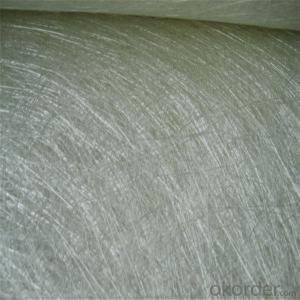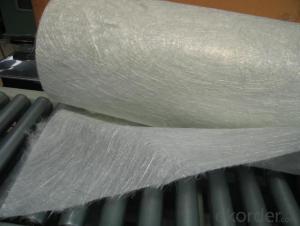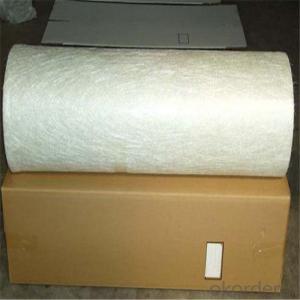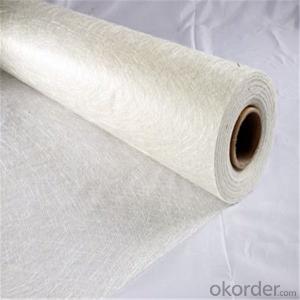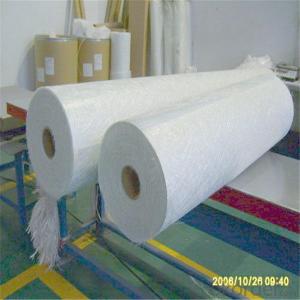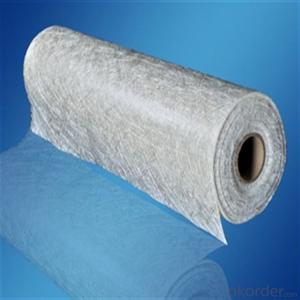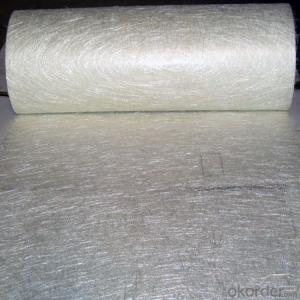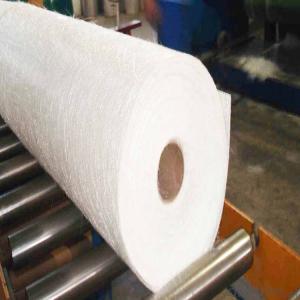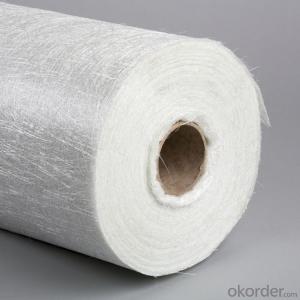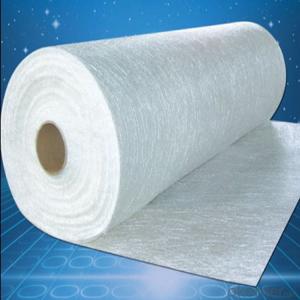Fiberglass Chopped Strand Polyester Fiber Mat
- Loading Port:
- Tianjin
- Payment Terms:
- TT OR LC
- Min Order Qty:
- 100 m.t.
- Supply Capability:
- 20000 m.t./month
OKorder Service Pledge
Quality Product, Order Online Tracking, Timely Delivery
OKorder Financial Service
Credit Rating, Credit Services, Credit Purchasing
You Might Also Like
Quick Details
| Technique: | Chopped Strand Fiberglass Mat (CSM) | Dimensions: | 450gsm | Mat Type: | Continuous Filament Mat |
| Fiberglass Type: | E-Glass | Softness: | softness | Place of Origin: | Jiangxi, China (Mainland) |
| Brand Name: | cnbm | Model Number: | 450gsm | color: | white |
| fiberglass type: | E glass | product: | e-glass powder chopped stand mats | binder: | powder or emulsion |
| width: | 1040 or 1270mm, as your requirement | weight: | 30 or 45kg/roll | paper tube diameter: | 90mm |
| outer diameter of roll: | 256mm | packing: | plastic film+carton box + pallet |
Packaging & Delivery
| Packaging Details: | plastic film+carton box + pallet |
| Delivery Detail: | 15-20days |
Specifications
1.e-glass powder chopped stand mats
2.binder:power or emulsion
3.width:1040mm or 1270mm
4.weight:450gsm
Picture
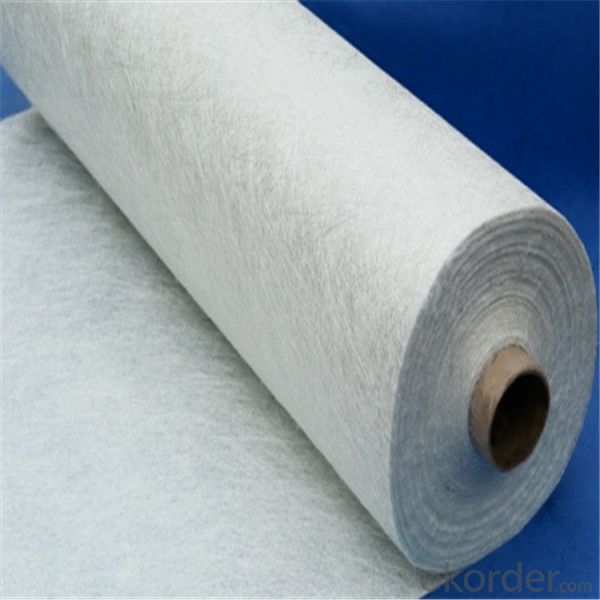
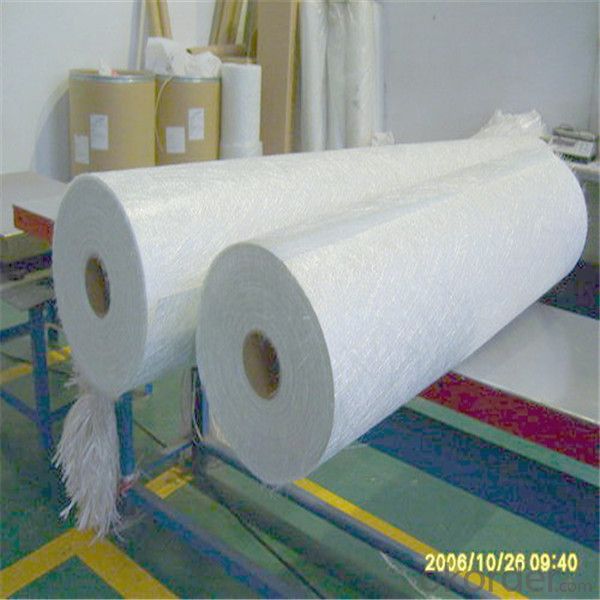
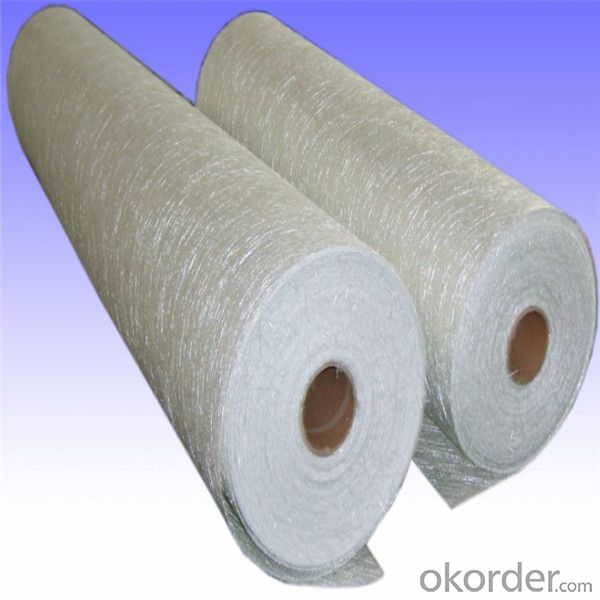
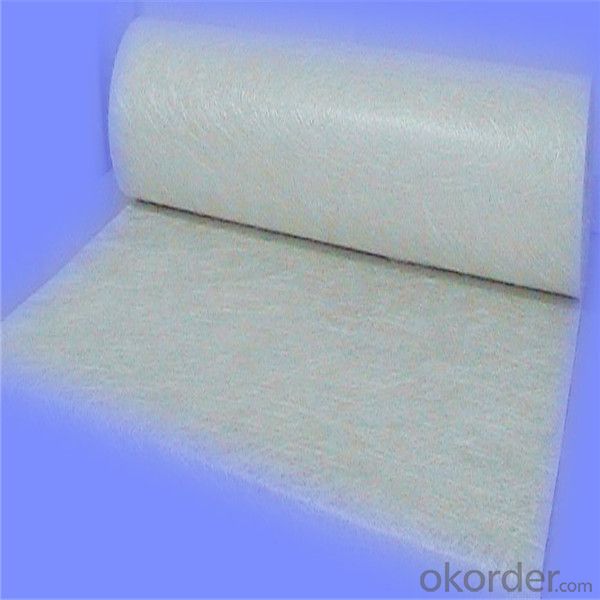
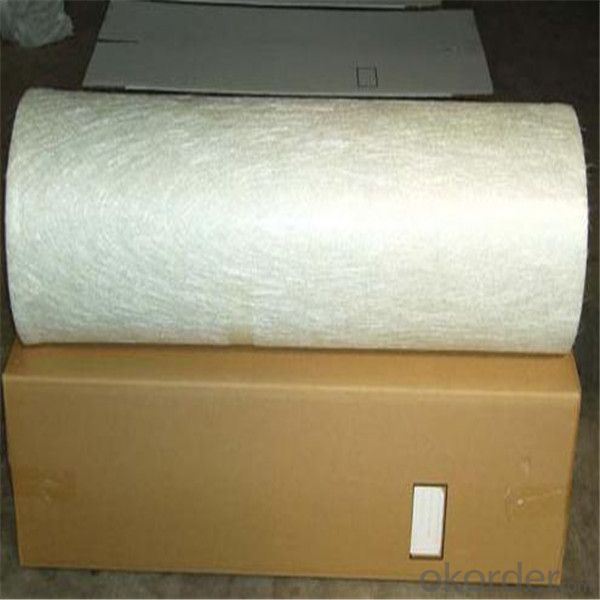
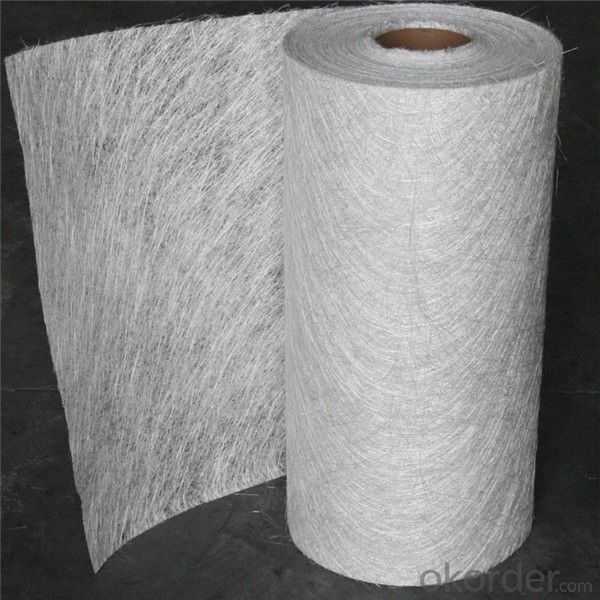
- Q:How does the chemical resistance of the chopped strand affect its performance?
- The performance of the chopped strand is heavily influenced by its chemical resistance. Chopped strands are commonly utilized as reinforcements in composite materials, like fiberglass, to enhance their durability and strength. These materials often come into contact with different chemicals, including acids, alkalis, solvents, and corrosive substances. The chemical resistance of the chopped strand refers to its ability to endure the harmful effects of these chemicals over time. If the chopped strand exhibits good chemical resistance, it will be capable of maintaining its physical properties and integrity when exposed to harsh chemical environments. This implies that it will not experience considerable degradation, weakening, or performance loss upon contact with these chemicals. Conversely, if the chopped strand has poor chemical resistance, it may deteriorate, swell, or even dissolve when exposed to specific chemicals. This can result in a reduction in strength, stiffness, and other mechanical properties, ultimately impacting the overall performance of the composite material. Hence, it is desirable to have a high level of chemical resistance in the chopped strand to ensure that the composite material retains its structural integrity and performance in chemical environments. This allows the material to withstand exposure to various chemicals without suffering significant damage or property loss. Consequently, it becomes suitable for a wider range of applications and prolongs its service life.
- Q:Can fiberglass chopped strand be used in automotive interior components?
- Yes, fiberglass chopped strand can be used in automotive interior components. Fiberglass chopped strand is a versatile material that offers several advantages for automotive applications. It is lightweight, which helps to reduce overall vehicle weight and improve fuel efficiency. Additionally, fiberglass chopped strand has excellent strength and stiffness properties, making it suitable for use in structural components such as seat frames, door panels, and dashboard supports. Furthermore, fiberglass chopped strand can be easily molded into complex shapes, allowing for the creation of intricate interior designs and features. It also has good resistance to chemicals, heat, and UV radiation, ensuring durability and longevity in automotive environments. Moreover, fiberglass chopped strand can be combined with other materials, such as resins, to enhance its performance characteristics. This allows for customization and optimization of the material properties to meet specific requirements in automotive interior components. Overall, fiberglass chopped strand is a viable choice for automotive interior components due to its lightweight, strength, moldability, and durability properties.
- Q:How is the delamination resistance of fiberglass chopped strand composites determined?
- The delamination resistance of fiberglass chopped strand composites is typically determined through various testing methods. One commonly used method is the interlaminar shear strength (ILSS) test. In this test, a specimen of the composite is prepared with layers of fiberglass and resin, and then subjected to a shear force to measure the resistance to delamination. Another method used to determine the delamination resistance is the mode I interlaminar fracture toughness test. This test evaluates the ability of the composite to withstand crack propagation in a mode I loading condition, where the crack propagates in the plane of the composite layers. The resistance to delamination is measured by analyzing the critical stress intensity factor (KIC) or critical energy release rate (GIC) required for crack propagation. Furthermore, various non-destructive testing techniques, such as ultrasonic testing or acoustic emission monitoring, can be employed to detect and characterize delamination within the composite structure. These techniques allow for the identification and evaluation of the extent and severity of delamination, providing valuable information on the resistance of the composite to delamination. Overall, the delamination resistance of fiberglass chopped strand composites is determined through a combination of destructive and non-destructive testing methods, focusing on the evaluation of interlaminar shear strength, fracture toughness, and the detection of delamination using advanced testing techniques.
- Q:Is fiberglass chopped strand compatible with vinyl chloride resin?
- Indeed, fiberglass chopped strand exhibits compatibility with vinyl chloride resin. Its widespread application as a reinforcement material in composite production is well-known, while vinyl chloride resin serves as a common thermoplastic matrix material in composite manufacturing. The design of fiberglass chopped strand specifically enables it to successfully adhere and bond with various resin systems, including vinyl chloride resin. This compatibility guarantees favorable mechanical properties and overall performance of the ultimate composite product. Consequently, fiberglass chopped strand can effectively be utilized in conjunction with vinyl chloride resin to produce sturdy and long-lasting composites.
- Q:How does the weathering resistance of the chopped strand affect its performance?
- The performance of the chopped strand is significantly influenced by its resistance to weathering. Weathering involves the gradual deterioration of materials caused by exposure to environmental factors such as sunlight, moisture, and temperature changes. Chopped strand is commonly utilized as a reinforcement in composite materials, and its capacity to withstand weathering plays a crucial role in determining its longevity and performance. When a chopped strand possesses high weathering resistance, it can endure prolonged exposure to UV radiation, moisture, and temperature fluctuations without experiencing significant deterioration. Consequently, the composite material remains robust and durable for an extended period, even when exposed to outdoor or harsh environmental conditions. On the contrary, if the chopped strand lacks weathering resistance, it can encounter various forms of deterioration. UV radiation can render the strand brittle, resulting in cracks and decreased strength. Moisture can lead to delamination, warping, or corrosion of the composite material. Additionally, temperature variations can exacerbate these problems by causing expansion and contraction, potentially leading to dimensional instability or structural failure. Hence, the weathering resistance of the chopped strand is vital in determining the overall performance of the composite material. It directly impacts the material's durability, strength, and ability to withstand environmental pressures. Manufacturers often consider the weathering resistance of chopped strands when selecting materials for composite applications. This ensures that the chosen strand can adequately endure the expected weather conditions and maintain the desired performance throughout the composite product's anticipated lifespan.
- Q:How does the fiber diameter distribution of fiberglass chopped strand affect the properties of composites?
- The fiber diameter distribution of fiberglass chopped strand plays a crucial role in determining the properties of composites. The distribution refers to the range of different fiber diameters present in the chopped strand. Firstly, the fiber diameter distribution determines the overall strength and stiffness of the composite material. Fiberglass fibers with a smaller diameter have a higher surface area-to-volume ratio, allowing for better bonding between the fibers and the matrix material. This results in improved mechanical properties such as tensile strength and modulus of elasticity. On the other hand, larger diameter fibers may provide better impact resistance due to their increased energy absorption capabilities. Secondly, the fiber diameter distribution affects the porosity and void content of the composite. Smaller diameter fibers tend to pack more closely together, reducing the amount of voids and enhancing the overall density and tensile properties of the composite. Conversely, larger diameter fibers can create more voids and reduce the interfacial adhesion between the fiber and matrix, leading to a decrease in strength and stiffness. Additionally, the fiber diameter distribution influences the surface finish and appearance of the composite. Smaller diameter fibers typically result in a smoother surface finish, while larger diameter fibers may create a more textured surface. This aesthetic aspect can be important in applications where the visual appearance of the composite is relevant. Furthermore, the fiber diameter distribution affects the manufacturing process and the ability to disperse and distribute the fibers evenly within the matrix material. Fibers with a narrow diameter distribution are easier to process and disperse uniformly, resulting in improved mechanical properties and consistency across the composite. Conversely, a wide diameter distribution may lead to challenges in achieving a homogeneous distribution of fibers, potentially resulting in variations in properties within the composite. In summary, the fiber diameter distribution of fiberglass chopped strand significantly impacts the properties of composites. It influences the overall strength, stiffness, porosity, surface finish, and manufacturing process. Therefore, understanding and controlling the fiber diameter distribution is essential in the design and production of high-performance composites.
- Q:Can fiberglass chopped strand be used in high temperature applications?
- Typically, high temperature applications do not call for the use of fiberglass chopped strand. Although fiberglass possesses a high melting point, the chopped strand variant lacks the ability to endure extreme temperatures. Chopped strand comprises short, discontinuous fibers that are ill-equipped to endure prolonged exposure to high heat. For situations involving high temperatures, it is more suitable to employ continuous strand fiberglass or other materials that are specially engineered to withstand these conditions.
- Q:How is fiberglass chopped strand different from fiberglass roving?
- Fiberglass chopped strand and fiberglass roving are both types of reinforcement materials used in various industries, but they differ in several key aspects. Firstly, the manufacturing process of these two materials is different. Fiberglass chopped strand is produced by chopping continuous glass fibers into short lengths and then bundling them together with a sizing agent. On the other hand, fiberglass roving is made by directly pulling molten glass through a bushing to form continuous filaments. The length of the fibers also sets them apart. Fiberglass chopped strand typically has shorter fibers, typically ranging from 1/8 to 2 inches in length. In contrast, fiberglass roving consists of longer continuous strands, usually ranging from 100 to 400 yards in length. Another significant difference lies in their application. Due to its shorter fiber length, chopped strand is commonly used as a reinforcement material for thermoplastic and thermosetting resins. It is ideal for injection molding, compression molding, and various other processes that require short fibers to be uniformly distributed within the matrix. On the other hand, fiberglass roving is often used as reinforcement in applications where longer continuous fibers are needed, such as filament winding, pultrusion, and hand lay-up processes. The mechanical properties of the two materials also differ. Chopped strand typically provides good impact resistance, dimensional stability, and overall strength. However, its short fibers can result in a lower tensile strength compared to roving. Fiberglass roving, with its longer continuous fibers, offers higher tensile strength and better resistance to fatigue and creep. In summary, the main differences between fiberglass chopped strand and fiberglass roving lie in their manufacturing process, fiber length, application, and mechanical properties. Understanding these distinctions is crucial when selecting the appropriate material for a specific application.
- Q:Can fiberglass chopped strand be used in the production of insulation boards?
- Yes, fiberglass chopped strand can be used in the production of insulation boards. It is commonly used as a reinforcing material to enhance the strength and durability of insulation boards.
1. Manufacturer Overview |
|
|---|---|
| Location | |
| Year Established | |
| Annual Output Value | |
| Main Markets | |
| Company Certifications | |
2. Manufacturer Certificates |
|
|---|---|
| a) Certification Name | |
| Range | |
| Reference | |
| Validity Period | |
3. Manufacturer Capability |
|
|---|---|
| a)Trade Capacity | |
| Nearest Port | |
| Export Percentage | |
| No.of Employees in Trade Department | |
| Language Spoken: | |
| b)Factory Information | |
| Factory Size: | |
| No. of Production Lines | |
| Contract Manufacturing | |
| Product Price Range | |
Send your message to us
Fiberglass Chopped Strand Polyester Fiber Mat
- Loading Port:
- Tianjin
- Payment Terms:
- TT OR LC
- Min Order Qty:
- 100 m.t.
- Supply Capability:
- 20000 m.t./month
OKorder Service Pledge
Quality Product, Order Online Tracking, Timely Delivery
OKorder Financial Service
Credit Rating, Credit Services, Credit Purchasing
Similar products
New products
Hot products
Hot Searches
Related keywords




